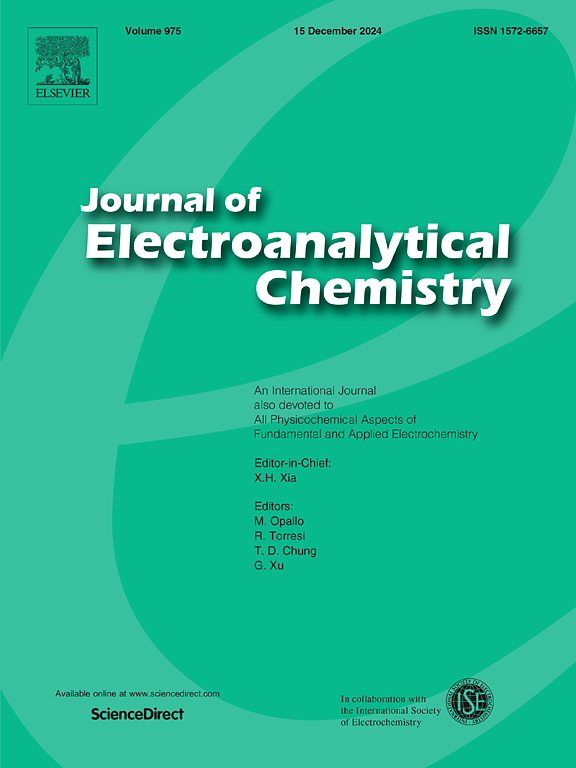Fabrication and electrochemical performance evaluation of lithiophilic dual-interface layers for high-rate lithium metal batteries
IF 4.1
3区 化学
Q1 CHEMISTRY, ANALYTICAL
引用次数: 0
Abstract
Lithium metal batteries (LMBs) are regarded as the paradigm of next-generation high-energy-density batteries, attributable to their exceptionally high theoretical specific capacity. However, the commercialization process of LMBs is impeded by severe dendrite growth, uncontrolled volume expansion, and unstable solid electrolyte interphase (SEI). Herein, by coating a trace of Al protective layer on the separator towards the lithium metal anode and modifying a layer of lithiophilic TiN on the conductive carbon cloth, lithiophilic dual-interface (Al-CFC@TiN-Li) synergistic protective layers are ingeniously designed and constructed, which effectively enhances the adsorption and desorption kinetics during the electrochemical cycle. Therefore, the provision of lithium nucleation sites during the plating/stripping process facilitates the ultra-fast transport of lithium ions and ensures a uniform lithium ion flux, thereby achieving ultra-high cycle stability (no short circuit at high current density (6 mA cm−2) and high area capacity (10 mAh cm−2)), exceptional capacity retention (a capacity retention of 92.6 % for Li||LFP cells over 400 cycles), and universal adaptability (adapted to the NCM523 cathode). This work provides a facile strategy for constructing high-performance LMBs, offering more possibilities for the practical application of LMBs.
求助全文
约1分钟内获得全文
求助全文
来源期刊
CiteScore
7.80
自引率
6.70%
发文量
912
审稿时长
2.4 months
期刊介绍:
The Journal of Electroanalytical Chemistry is the foremost international journal devoted to the interdisciplinary subject of electrochemistry in all its aspects, theoretical as well as applied.
Electrochemistry is a wide ranging area that is in a state of continuous evolution. Rather than compiling a long list of topics covered by the Journal, the editors would like to draw particular attention to the key issues of novelty, topicality and quality. Papers should present new and interesting electrochemical science in a way that is accessible to the reader. The presentation and discussion should be at a level that is consistent with the international status of the Journal. Reports describing the application of well-established techniques to problems that are essentially technical will not be accepted. Similarly, papers that report observations but fail to provide adequate interpretation will be rejected by the Editors. Papers dealing with technical electrochemistry should be submitted to other specialist journals unless the authors can show that their work provides substantially new insights into electrochemical processes.

 求助内容:
求助内容: 应助结果提醒方式:
应助结果提醒方式:


